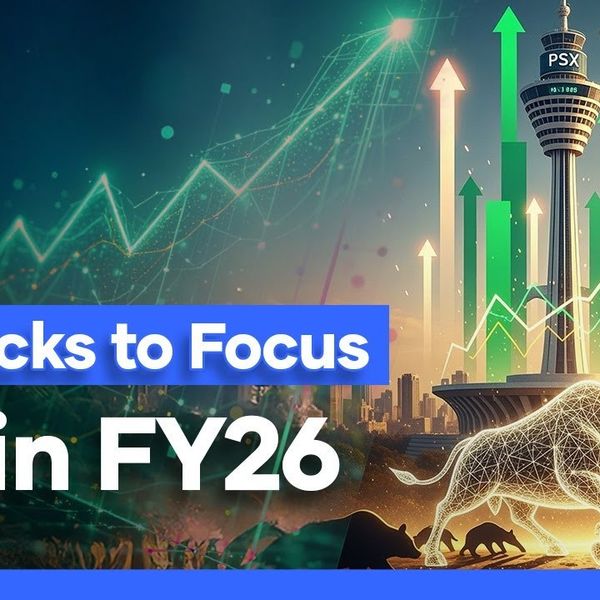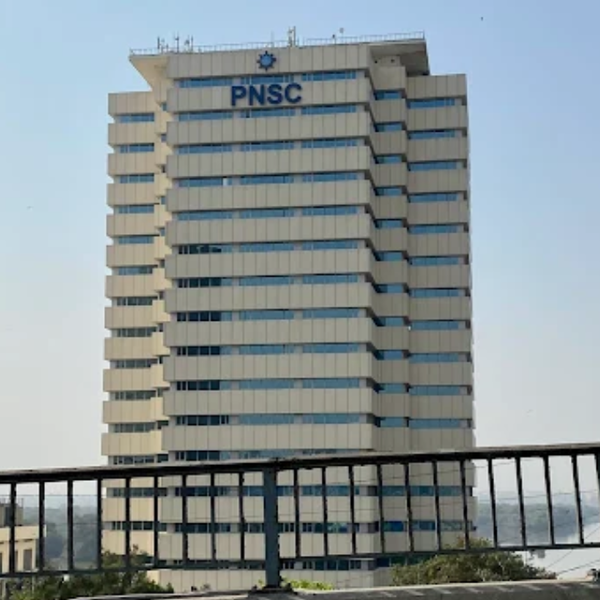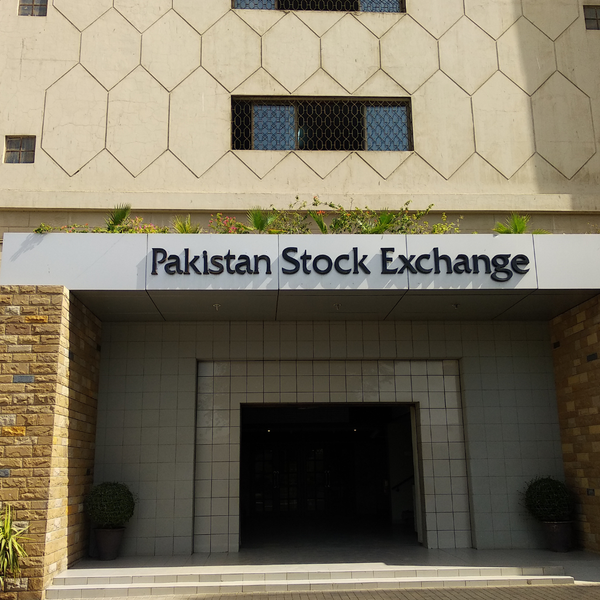PSX projected to climb 33.8% in FY26
Low interest rates, stable currency, and corporate earnings growth expected to fuel rally toward 168,800
Business Desk
The Business Desk tracks economic trends, market movements, and business developments, offering analysis of both local and global financial news.

RDNE Stock Project via Pexels
The Pakistan Stock Exchange (PSX) is projected to deliver a return of 33.8% in fiscal year 2025-26, with the benchmark KSE-100 index forecast to reach 168,800 points by June 2026, according to a report by brokerage house Arif Habib Ltd.
The optimistic outlook is anchored in expectations of a low interest rate environment and decent corporate earnings growth.
Earnings for FY26 are anticipated to grow by 14% excluding banks and exploration and production (E&P) companies. Overall earnings growth, including all sectors, is estimated at 9.2%.
The KSE-100 is currently trading at a forward price-to-earnings (P/E) ratio of 6.8x based on FY26 earnings. The target index level implies a P/E of 7.4x on FY27 earnings, still below the 10-year historical average of 8.0x but representing a meaningful re-rating from the depressed five-year average of 5.5x. This re-rating potential is linked to improving macroeconomic stability and clearer earnings visibility.
The KSE-100 remains the second most liquid market within the MSCI Frontier Markets (FM) space, with an average daily turnover of $102 million in FY25. The index is also one of the most attractive globally in terms of valuation, trading at a P/E of 6.8x compared to the regional average of 11.9x, and a price-to-book (P/B) ratio of 1.1x against the regional average of 1.5x.
Despite these strengths, Pakistan’s equity market experienced net foreign outflows of $304 million in FY25, compared to net inflows of $141 million in FY24.
This reversal was driven largely by global developments, including reciprocal U.S. tariffs and elevated interest rates, which prompted investors to shift capital to developed markets. Profit-taking also contributed, as Pakistan’s market delivered some of the strongest global returns during the year.
Looking ahead, Arif Habib Ltd. anticipates foreign investment to rebound in FY26, projecting inflows of $150-200 million. This recovery is expected to be fueled by attractive valuations, a more stable economic outlook, and expectations of currency parity stabilizing around PKR 293 to the dollar.
Domestic liquidity has continued to dominate the market, accounting for 93% of total market volume in FY25. Major domestic buying came from mutual funds ($233 million), companies ($94 million), individuals ($68 million), and non-banking financial companies ($2.2 million). Meanwhile, banks, brokers, and insurance companies recorded net outflows.
State Life Insurance Corporation (SLIC) significantly increased its market exposure since December 2023, investing an additional PKR 64 billion, which contributed to overall portfolio returns. Individuals, companies, NBFCs, and brokers now collectively hold 74% of the market, up from 43.2% in FY17. Mutual funds’ share has dipped to 9.2% from 12% in 2017, while bank exposure has inched up to 8% from 7.7%.
The report estimates that a 1% reallocation from fixed income to equities by mutual funds and insurance companies, excluding SLIC, would result in inflows of PKR 34.7 billion and PKR 3.5 billion, respectively. For SLIC alone, a 1% shift would inject another PKR 11.2 billion into equities.







Comments
See what people are discussing